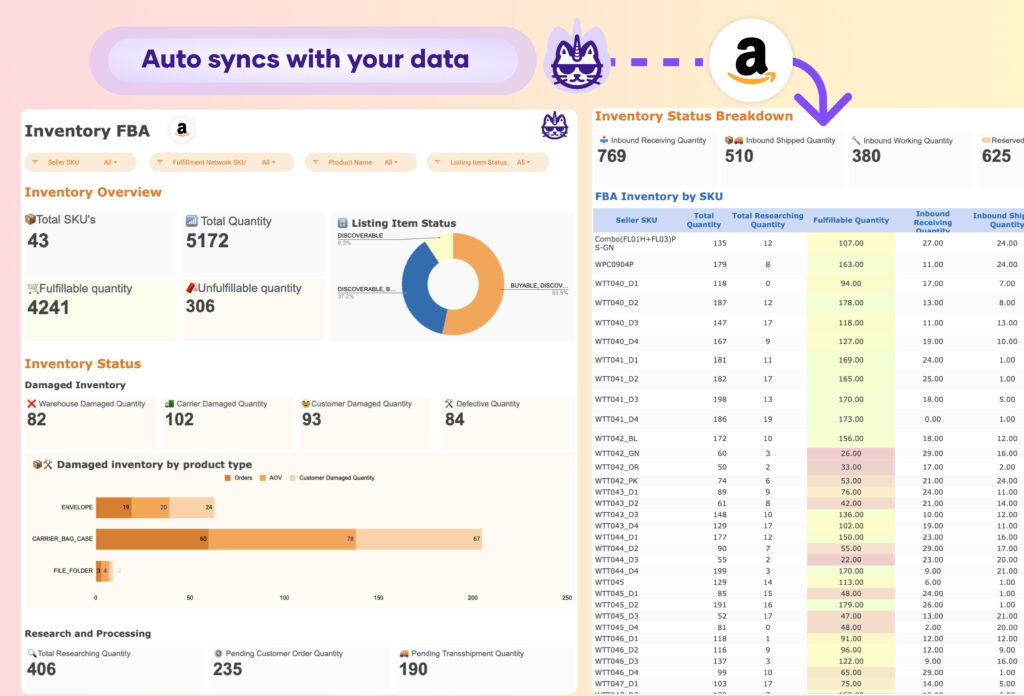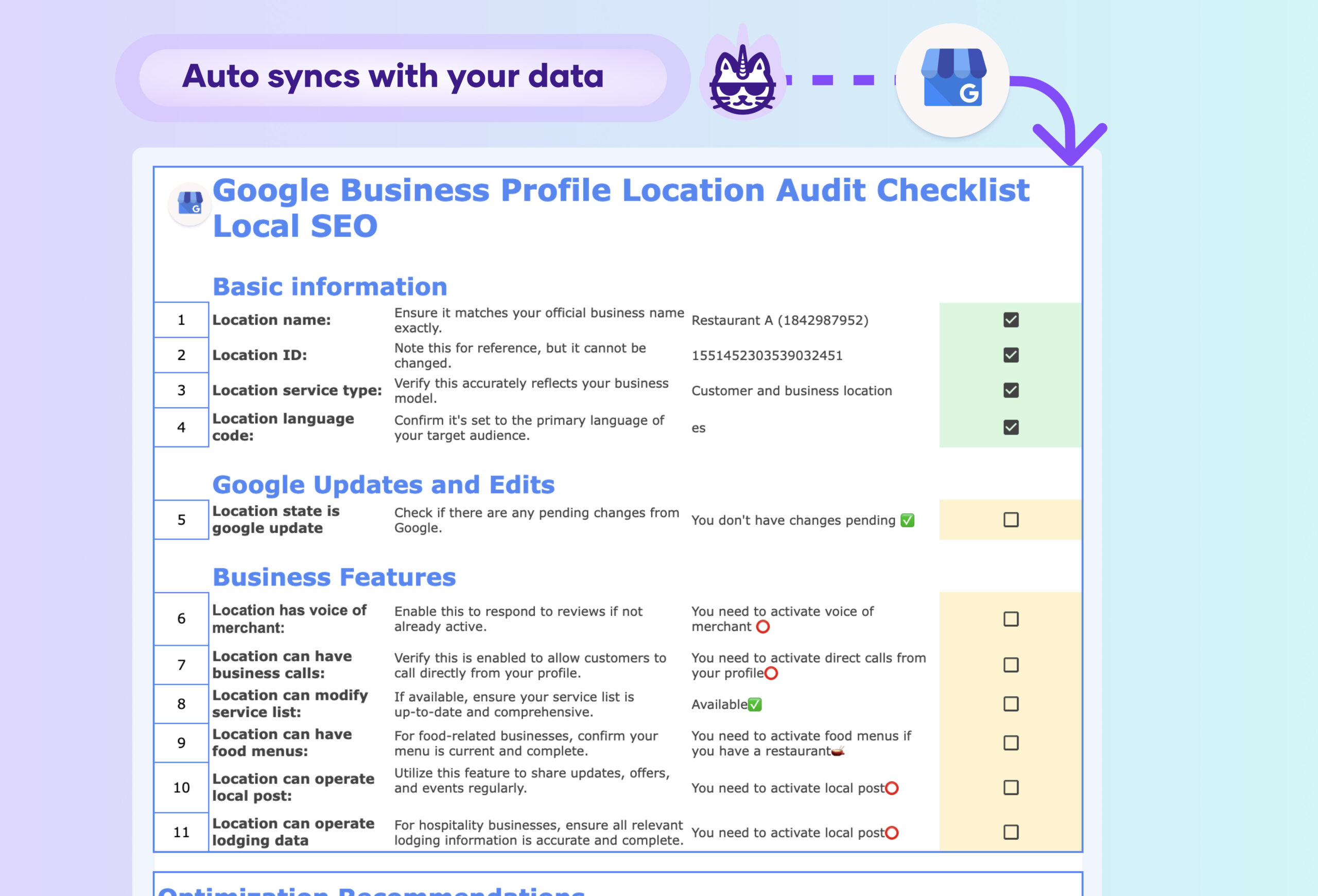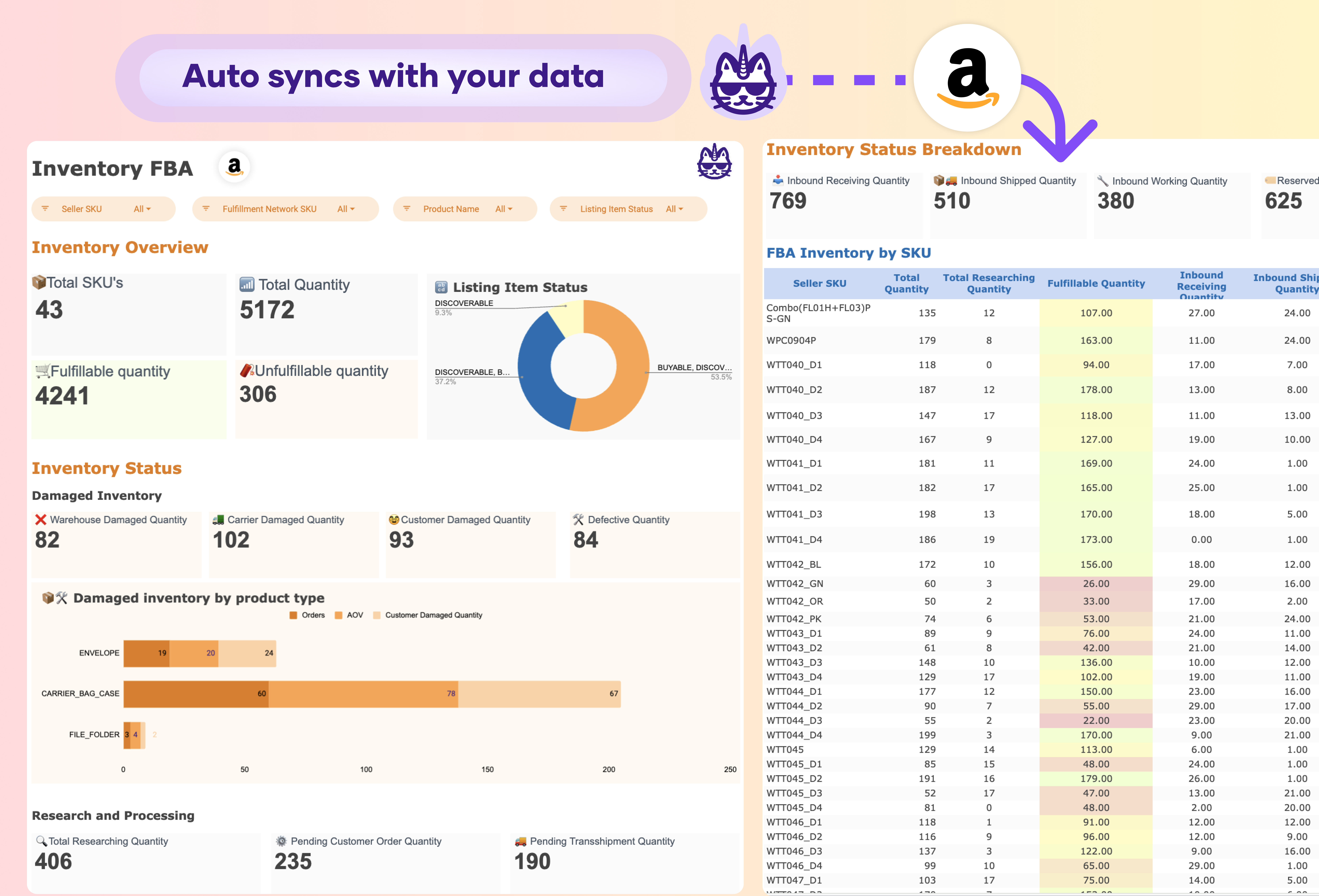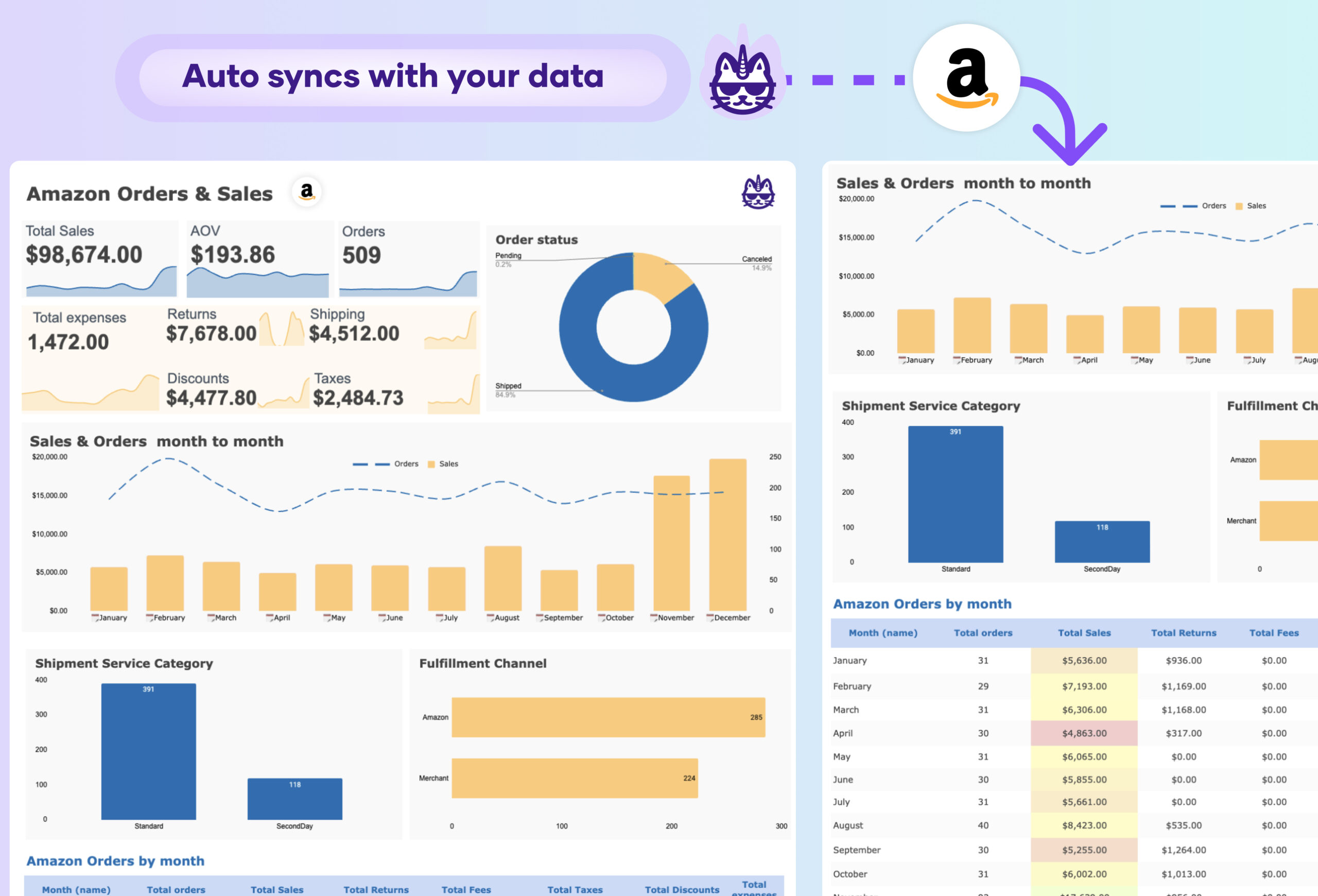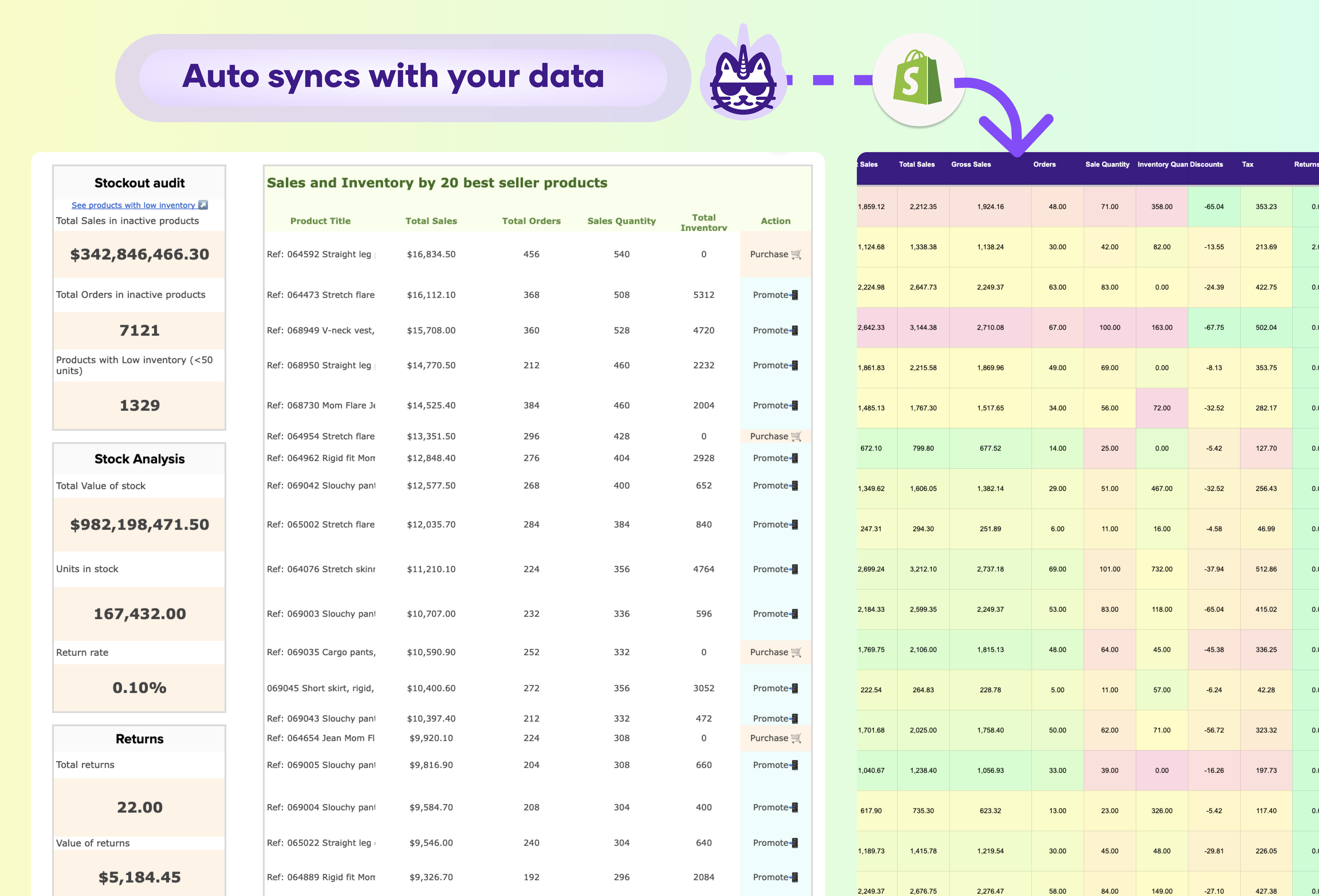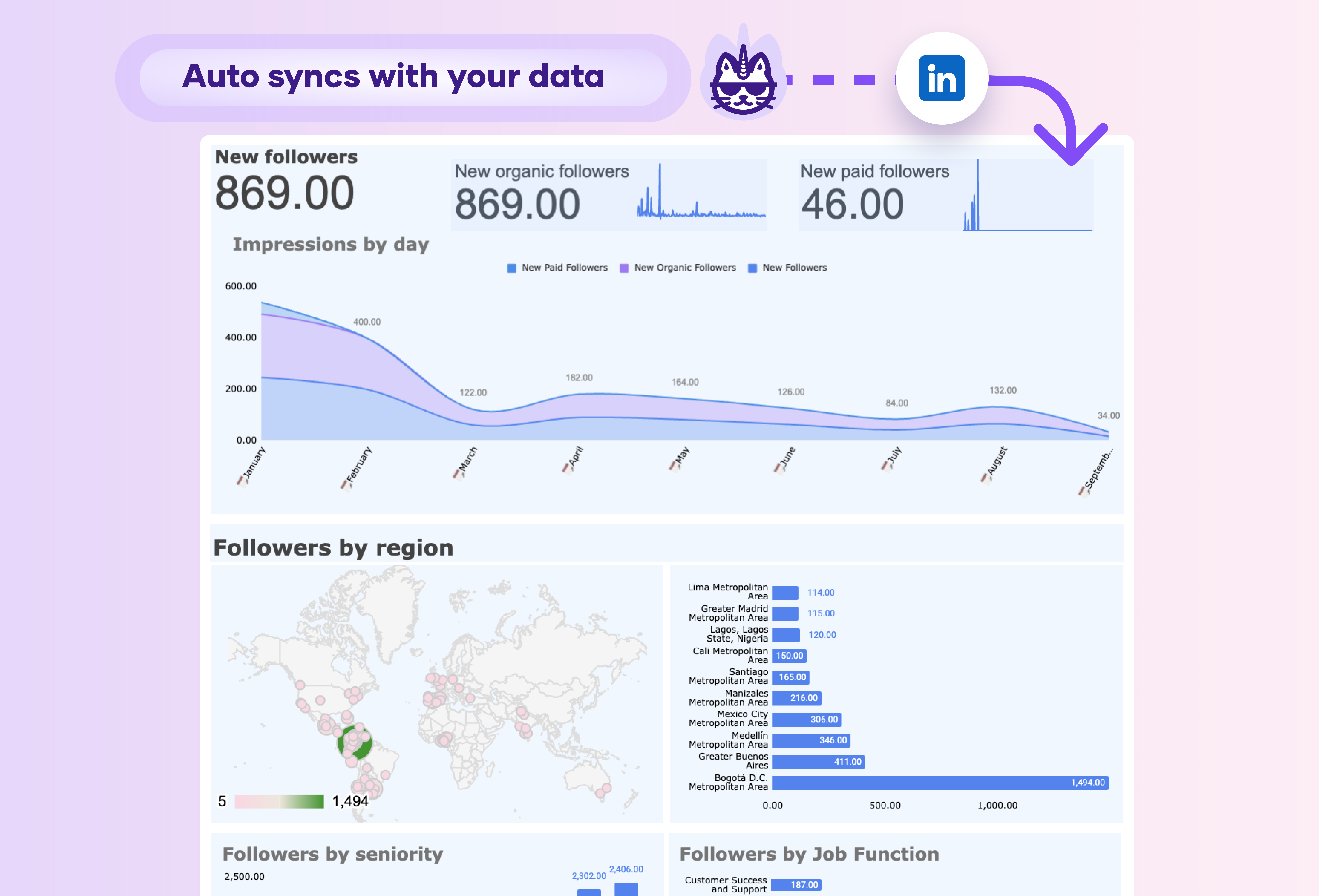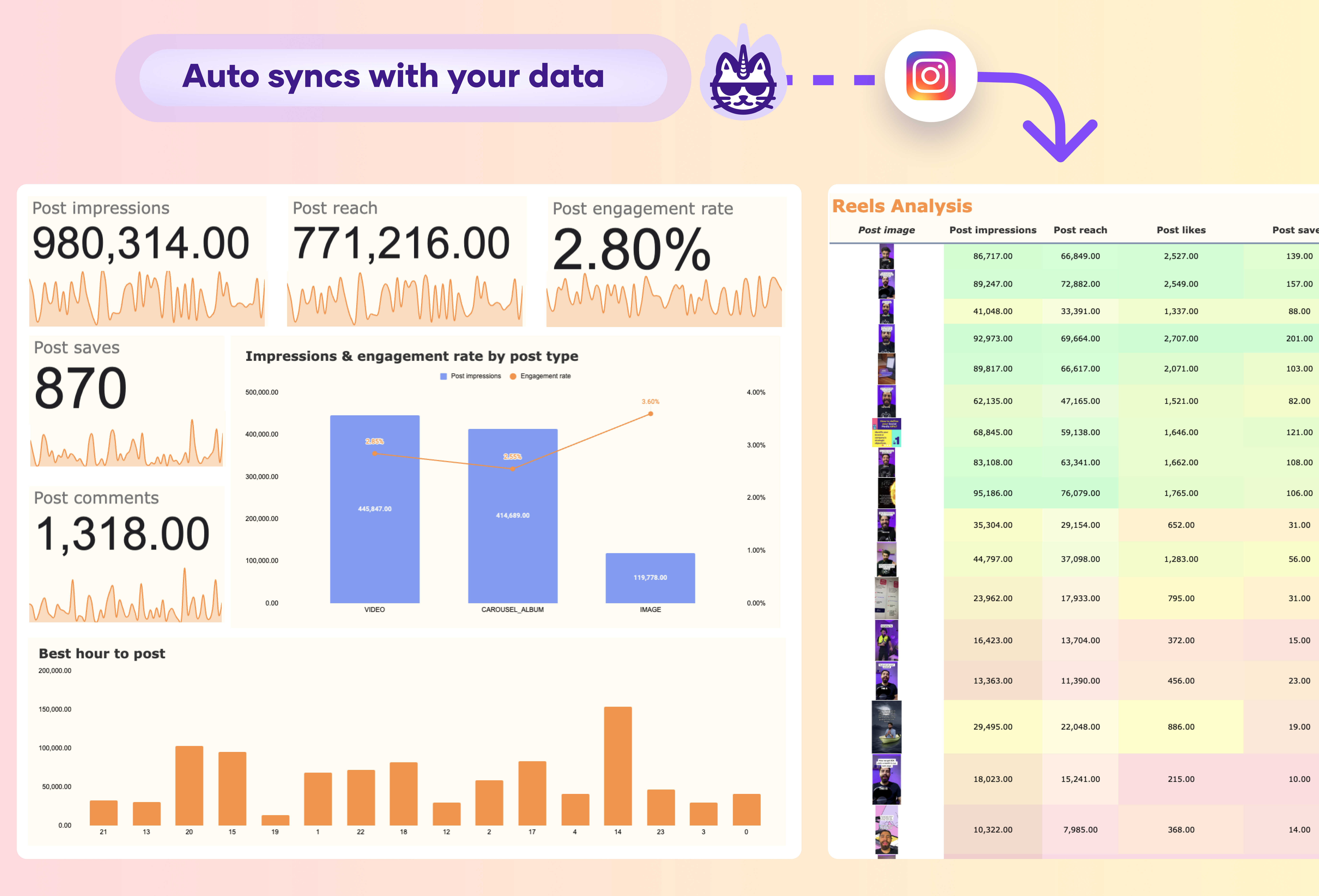An Amazon FBA inventory dashboard report should include key metrics such as Total SKUs, Total Quantity, Fulfillable Quantity, and Unfulfillable Quantity to provide a comprehensive view of your inventory status. The dashboard should track metrics like Inbound Receiving, Shipped, and Working Quantities to monitor the flow of inventory into Amazon’s fulfillment centers. Additionally, it should highlight Damaged Inventory by type (Warehouse, Carrier, Customer) and Researching Quantities to identify potential issues affecting inventory health.
Month-over-month trends in Inventory Levels and Fulfillment Status offer insights into inventory management efficiency. Monitoring metrics like Pending Customer Orders and Transshipment Quantities helps assess processing times and fulfillment capabilities
.Visualizations such as Inventory Status Breakdown, Damaged Inventory by Product Type, and SKU-specific performance charts help make informed decisions about restocking or addressing damaged goods. Including actionable insights on SKUs with high inbound quantities or those needing attention due to damage will optimize stock management and operational strategies.
Also, include an auto-sync feature for real-time data updates from Amazon Seller Central using Porter Metrics Google Sheets extension.

